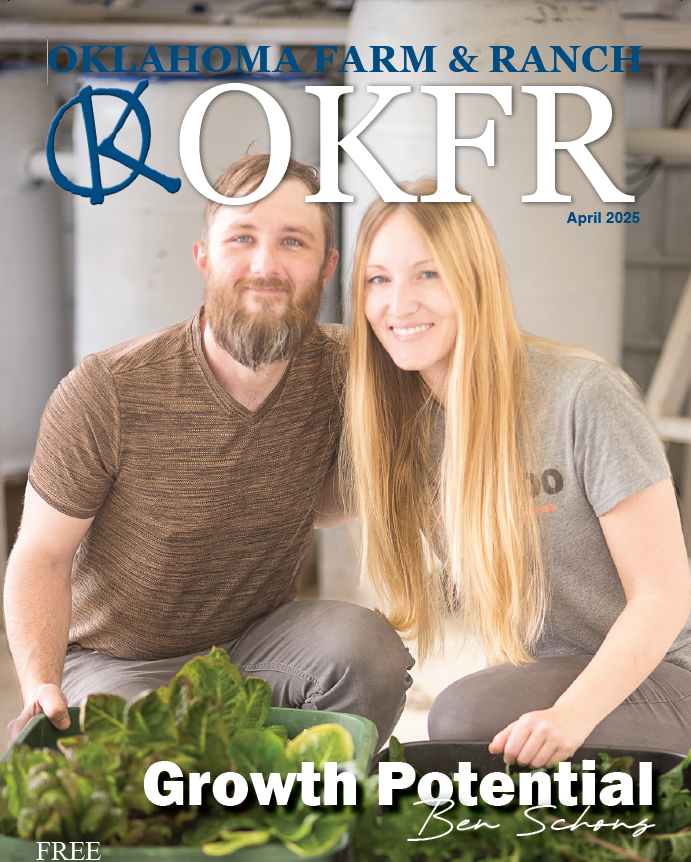Farm & Ranch
Dr. Jason
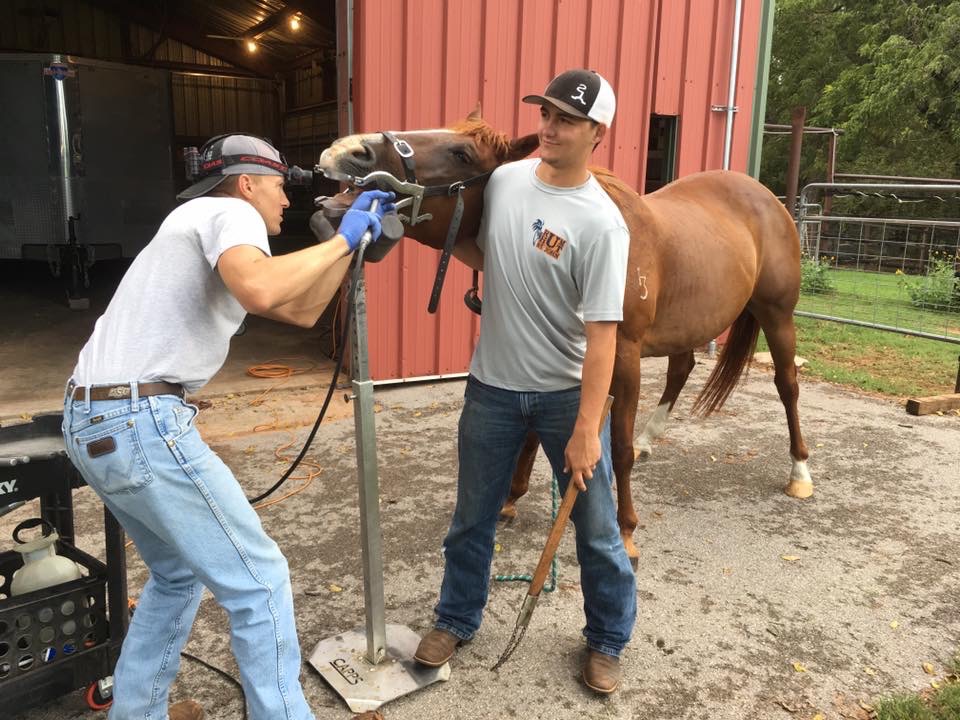
By Ddee Haynes
“We make a living by what we get. We make a life by what we give.”
Winston S. Churchill
The words of Winston Churchill could not ring truer to a person’s character than to Dr. Jason Thorne, DVM.
I first met Jason (aka Dr. Thorne) while on a field trip with the Custer County 4-H horse club about seven years ago. Jason was fresh out of vet school and working for a local clinic. I am pretty certain he was still considered the low man on the totem pole, thus the reason for him being chosen to visit with a group of lively 4-H kids. As a mom of one of those kids, I was extremely impressed how Jason handled all the questions that were thrown at him, how he took time to show the kids around the clinic and overall made the entire experience a huge success.
Jason’s demeanor and sincerity that day left a lasting impression on those kids and I couldn’t help but chuckle to myself as I listened to the conversations on the way home as a few of the young girls talked about what they had learned that day and “how cute” Dr. Thorne was.
Growing up in Marlow, Okla., as the son of the Police Chief, Jason once considered following in his father’s footsteps, but his love for animals kept pulling him in a different direction. When his dad began adding longhorns to his herd, Jason had the idea to start training them to ride. Jason would choose which longhorn to train as to which animal would first come up to him. Jason stated that gaining the trust of the longhorn was important, but building their trust was the key. Once a longhorn pupil was chosen, Jason would become the only person to have contact with the animal, even pulling it from the herd. The longhorn would come to rely solely on Jason. During his high school years, Jason trained several longhorns to ride and would later sell them.
In addition to his love for animals Jason enjoyed playing basketball and football. However, when he later transferred to a larger school, he found that sports were taking time away from his true love, animals. Jason’s career path was determined after a “Career day” allowed him to work alongside Dr. Holly Wilson at Beavers Animal Hospital in Lawton, Okla. At the time Jason was 15 years-old and happened to be at the hospital while Dr. Wilson was preforming a C-section on a greyhound. Dr. Wilson showed Jason how to clear the fluid from the pup’s lungs. Thanks to Dr. Wilson and Jason, all four pups survived and the career path for Jason was clear.
Jason graduated with his Doctor of Veterinary Medicine from Oklahoma State University, Stillwater. Okla., in the spring of 2010. Jason took his first job at a clinic in Western, Okla., where I first met him on the 4-H horse club field trip. Little did I know after meeting Jason that afternoon that he would become a huge part of our family, not just as the DVM for our animals but also as a friend.
In 2016, Dr. Jason and his wife Lacey decided to take a leap of faith and go out on their own. They purchased a vet trailer and hit the ground running. It did not take long before Jason’s reputation, work ethics and true love for animals spread around the countryside. Jason soon became the go-to-vet for cattle ranchers, horse lovers and, of course, the small animal cliental.
Our family had started using Jason for horse vaccinations and maintenance, but it wasn’t until one almost fatal night that we saw just how much this young vet truly cared for his four-legged patients. The weather had turned off cold and wouldn’t you know it, one of our horses was showing signs of colic. As I prayed for our horse, Magic, I dialed Jason’s cell. When Jason answered I explained the symptoms and he assured me he was on his way.
Sure, enough Magic was impacted, dehydrated and on her way to a full-blown colic. Jason worked patiently administrating fluids all the while touching and speaking to Magic in a calm and soothing way. After the first bag was emptied, he still did not feel Magic was good and decided to give her another bag of fluids. By this time, it was close to 11:00 p.m. and pretty darn cold even inside the barn. Jason told me to go inside and that he would stay with Magic. He said he had paperwork to do and could sit inside his truck and work while keeping an eye on her. Although I offered to stay with him and Magic, he insisted I go inside. A few hours later, Jason texted me. Magic was going to be fine and he would check on her the next day. True to his word, he not only called but also came out to look at her again.
Over the past few years we have had other emergencies as well as non-emergency issues with our animals. Each time Jason has gone above and beyond. After my favorite dog Pete was chewed up by coyotes in the wee hours of a Sunday morning, I waited until after 8:00 a.m. that morning to call. Jason told me to load up Pete and meet me at his home. Once again Jason saved the day and Pete survived. Although I do believe Pete still holds a grudge for Jason calling him fat! Come on, Jason, Pete is just big-boned.
When Jason decided to strike out on his own, Lacey supported his decision and took the leap of faith with him. Together they have worked alongside one another to establish Territory Medicine, located just west of Weatherford, Okla. Both Jason and Lacey have made many sacrifices to make their dreams a reality. While Jason worked long hours, Lacey gave up family time with him. For over a year the young family lived in a 5th-wheel trailer with their two small children inside what is now part of the clinic.
Jason, Lacey and their two young daughters Aysa and Aspyn now make their home over the clinic in a home they literally built themselves. Territory Medicine is booming. Although his business is continuing to grow, Dr. Jason still makes each patient and their owners feel as if they are his only priority.
I whole heartily believe the old saying “If you love your job you will never work a day in your life.” Dr. Jason Thorne is a perfect example of loving his job. Keep up the good work, Dr. Jason, and thank you for all you do!
Until next time….
Read more in the January issue of Oklahoma Farm & Ranch.
Farm & Ranch
Lice in Cattle
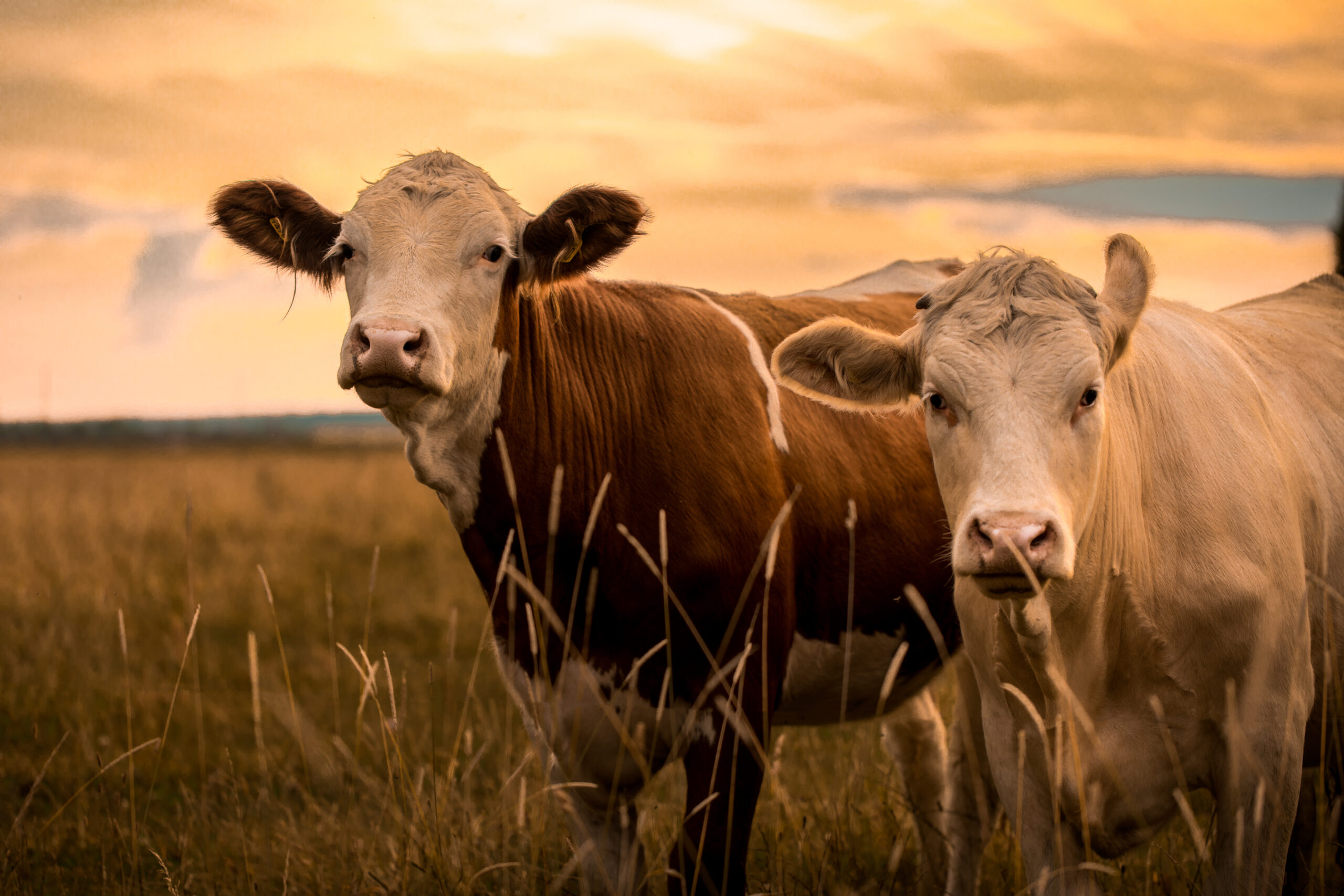
Barry Whitworth, DVM, MPH | Senior Extension Specialist
Department of Animal & Food Sciences | Freguson College of Agriculture | Oklahoma State University
Cattle lice cost Oklahoma cattlemen millions of dollars each year in decreased weight gains and reduced milk production. If cattle producers have not treated their cattle for lice this fall, they need to consider what type of lice control to initiate. This is especially true for cattle producers that had problems in the previous year. Cattle producers should monitor cattle closely during the months of December, January, and February. Producers should not wait until clinical signs appear before beginning treatment.
The life cycle of the different species of cattle lice are very similar. The life cycle begins with the female louse attaching her egg to a shaft of hair. The egg will hatch as a small replica of the adult. After several molts, the adult will emerge. The cycle takes around 3 to 4 weeks to complete. These newly hatched lice will spend their entire life on the host and are host specific which means cattle cannot be infected with lice from other animals.
Small numbers of lice may be found on cattle in the summer, but high populations of lice are associated with cold weather. Since cattle tend to be in closer proximity to each other in the winter, lice can spread easily between cattle. A small percentage of cattle tend to harbor larger numbers of lice. These animals are sometimes referred to as “carrier animals”, and they may be a source for maintaining lice in the herd. As with many other diseases, stress also contributes to susceptibility and infestation.
Signs of lice infections in cattle are hair loss, unthrifty cattle, and hair on fences or other objects. If producers find these signs, they may want to check a few animals for lice. They can check for lice by parting the hair and observing the number of lice per square inch. If an animal has 1 to 5 lice per square inch, they are considered to have a low infestation. Cattle with 6 to 10 lice would be considered moderately infested. Any cattle with more than 10 lice per square inch are heavily infested.
Cattle have two types of lice. One type is the biting or chewing louse. These lice have mouth parts that are adapted to bite and chew the skin. The second type is sucking louse. These lice have mouth parts that will penetrate the skin and suck blood and other tissue fluids. It is not uncommon for cattle to be infested with more than one species of lice.
The biting or chewing louse is Bovicola (Domalinia) bovis. This type of lice feeds on hair, skin, skin exudate, and debris. Typical clinical signs with this type of louse are hair loss, skin irritation and scabs on the skin. They are found on the shoulders and back.
Four types of sucking lice can be found in the United States. The first is the “short nose” louse or Haematopinus eurysternus. This is the largest cattle louse. This louse is found on the neck, back, dewlap, and base of the tail. The second is the “long-nose” louse or Linognathus vituli. This louse is bluish in color with a long slender head. This louse is found on the dewlap, shoulders, sides of the neck, and rump. The third is the “little blue” louse or Solenoptes cappilatus. This louse is blue in color and is the smallest cattle louse. This louse is found on the dewlap, muzzle, eyes, and neck. The last is the “tail” louse or Haematopinus quadripertuses. This louse has been found in California, Florida, and other Gulf Coast States. This louse is found around the tail.
The sucking lice have the potential to cause severe anemia if the numbers are high. This can result in poor doing cattle or in extreme cases death. They also can spread infectious diseases. The long-nose louse has been found to be a mechanical vector for anaplasmosis.
Prevention of lice infestation should begin in the fall. Producers should not wait for clinical signs to appear before beginning treatment. Several products are available to control lice. Producers should read and follow the label directions. Producers should keep in mind that many of the lice control products require two administrations to control lice. Failure to do this may result in cattle having problems with lice infestations.
Some producers have complained that some products do not work. These complaints have not been verified; however, this is a good reason to consult with a veterinarian for advice on what products to use. Most treatment failures are associated with incorrect application not resistance. Proper application of Pour-On insecticides is to administer from the withers to the tailhead. Also, the proper dose is essential for good control.
Cattle producers need to consider a few other things in lice control. Since cattle in poor body condition are more prone to lice infestation, producers need to be sure that the nutritional needs of their cattle are being met. Cattle that have a history of lice infestations should be culled. Lastly, any purchased cattle need to be inspected for lice before entering the herd. If lice are found, the animals should be isolated and treated before entering the herd.
If producers would like more information on lice in cattle, they should contact their local veterinarian or Oklahoma State University County Extension Agriculture Educator. They may also want to read Oklahoma Cooperative Extension Fact Sheet Beef Ectoparasites VTMD-7000 at https://extension.okstate.edu/fact-sheets/beef-cattle-ectoparasites.html.
Farm & Ranch
From Plow to Plentiful: The Most Important Inventions in Agricultural History
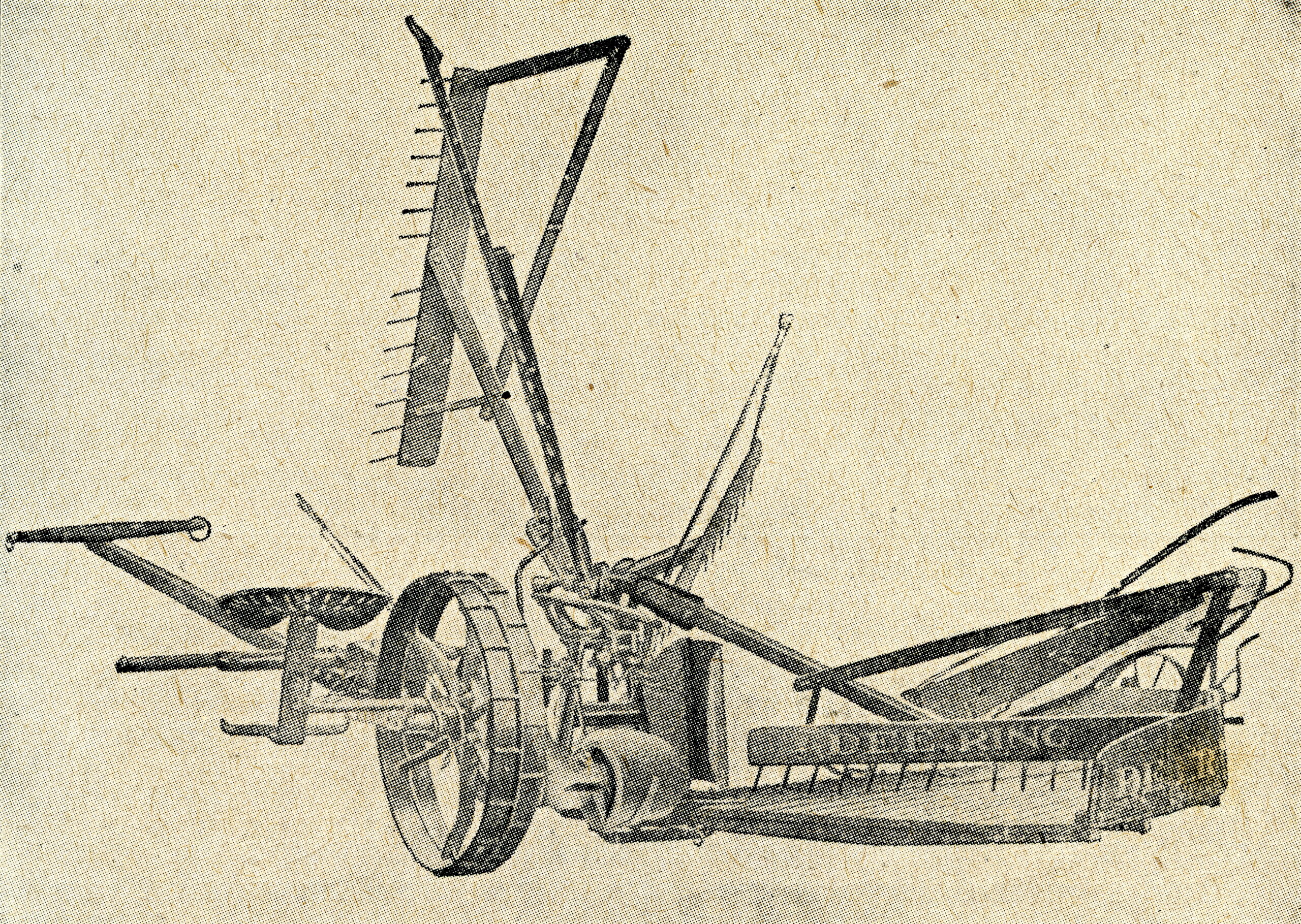
Agriculture is the foundation of human civilization. Throughout history, the quest for more efficient and productive methods of farming has led to the invention of countless tools and technologies. These inventions have not only revolutionized agriculture but have also played a pivotal role in shaping societies and economies. In this comprehensive exploration, we will delve into some of the most important inventions related to agriculture that have had a profound and lasting impact on the way we grow and harvest food.
The Wheel and Axle: Unlocking Mobility and Productivity
The wheel and axle, one of the earliest inventions in human history, had a significant impact on agriculture. This invention, which dates back to around 3500 BC, revolutionized transportation, making it possible to move heavy loads and machinery more efficiently. In agriculture, the wheel and axle played a crucial role in the development of carts, wagons, and plows, enabling farmers to transport goods and cultivate larger areas of land.
The Plow: Cultivating the Earth’s Riches
The plow is arguably one of the most iconic agricultural inventions. Its origins trace back to ancient Mesopotamia and Egypt around 3000 BC. The plow transformed agriculture by allowing farmers to dig deep furrows in the soil, turning it over and aerating it. This improved soil quality, making it more fertile and suitable for planting a wider variety of crops. The plow’s evolution from simple wooden implements to more sophisticated steel plows in the 19th century drastically increased the efficiency of farming.
Irrigation Systems: Mastering Water Management
Irrigation systems are a testament to human ingenuity in harnessing water for agriculture. The earliest known irrigation systems date back to ancient Egypt and Mesopotamia, around 6000 BC. These systems, which transported water from rivers to fields, allowed farmers to cultivate crops even in arid regions. Over time, irrigation methods have become increasingly sophisticated, incorporating canals, pumps, and drip irrigation systems, ensuring a consistent and controlled water supply for agriculture. Today, modern irrigation practices help feed billions of people around the world.
The Seed Drill: Sowing the Seeds of Precision
The seed drill, invented by Jethro Tull in the early 18th century, represented a leap forward in precision agriculture. Before its invention, seeds were sown by hand, resulting in uneven distribution and often wasteful planting practices. Tull’s seed drill, powered by horses, allowed farmers to sow seeds at a consistent depth and spacing, significantly increasing crop yields. This invention laid the groundwork for modern agricultural practices, emphasizing efficiency and precision in planting.
The Cotton Gin: Revolutionizing Textile Production
While not directly related to food production, the cotton gin, invented by Eli Whitney in 1793, had a profound impact on agriculture in the American South. This revolutionary machine automated the process of separating cotton fibers from their seeds, increasing the efficiency of cotton production by a factor of 50. The cotton gin’s success led to the widespread cultivation of cotton as a cash crop, shaping the economic landscape of the Southern United States.
The Mechanical Reaper: Harvesting the Bounty
The mechanical reaper, invented by Cyrus McCormick in the 1830s, mechanized the labor-intensive process of harvesting grain crops such as wheat. This invention featured a cutting mechanism that could efficiently harvest crops at a much faster rate than manual labor. The mechanical reaper played a pivotal role in increasing agricultural productivity during the 19th century and contributed to the expansion of agriculture in the United States.
The Steam Engine: Powering Progress
The steam engine, invented by James Watt in the late 18th century, revolutionized agriculture by providing a reliable source of power for various farming machinery. Steam engines were used to drive pumps for drainage, power threshing machines, and even locomotives for transporting agricultural goods to markets. The introduction of steam power marked a significant shift from human and animal labor to mechanical power, greatly increasing agricultural efficiency.
The Refrigerated Railcar: Expanding Food Distribution
In the late 19th century, the refrigerated railcar, often credited to Gustavus Swift, transformed the way food was transported and distributed. Before its invention, the transportation of perishable goods was a major logistical challenge. Refrigerated railcars allowed for the long-distance shipment of fresh produce, meat, and dairy products, opening up new markets and ensuring a more reliable food supply for urban populations.
Pesticides and Herbicides: Protecting Crops
The development of synthetic pesticides and herbicides in the 20th century marked a significant milestone in agriculture. These chemical compounds, such as DDT and glyphosate, helped farmers combat pests and weeds that threatened their crops. While these chemicals have played a vital role in increasing agricultural productivity, their use has also raised concerns about environmental impact and health risks, leading to ongoing debates and regulatory measures.
The Green Revolution: Feeding the World
The Green Revolution, which began in the mid-20th century, represented a coordinated effort to improve crop yields through the development of high-yielding varieties of staple crops, improved irrigation techniques, and the increased use of fertilizers and pesticides. This agricultural revolution, led by scientists like Norman Borlaug, played a pivotal role in increasing food production worldwide, helping to avert widespread famine and addressing the food needs of a growing global population.
Genetically Modified Organisms (GMOs): Customizing Crops
Genetically modified organisms (GMOs) represent a more recent innovation in agriculture. GMOs are organisms whose genetic material has been altered in a way that does not occur naturally. In agriculture, this technology has been used to develop crops with traits such as resistance to pests, tolerance to herbicides, and improved nutritional content. GMOs have sparked considerable debate over their safety, environmental impact, and ethical considerations.
Precision Agriculture: The Digital Age of Farming
The digital revolution has brought agriculture into the realm of big data and advanced technology. Precision agriculture, also known as smart farming, leverages sensors, GPS technology, drones, and data analytics to optimize various aspects of farming, including planting, irrigation, and crop management. This data-driven approach allows farmers to make informed decisions, minimize resource wastage, and increase crop yields, ultimately contributing to sustainable and efficient agriculture.
Throughout history, agriculture has been a dynamic and ever-evolving field driven by innovation and necessity. The inventions discussed in this article represent a sampling of the many remarkable contributions that have shaped the way we grow and harvest food. As we confront contemporary challenges, such as climate change, food security, and sustainable agriculture, the spirit of innovation continues to drive the development of new technologies and approaches that will shape the future of agriculture. Whether through advancements in genetic engineering, digital agriculture, or sustainable practices, the journey of agricultural innovation is far from over. As we look ahead, we can expect agriculture to continue to adapt and transform, ensuring that the world’s growing population has access to safe, nutritious, and abundant food.
Farm & Ranch
The Working Dog
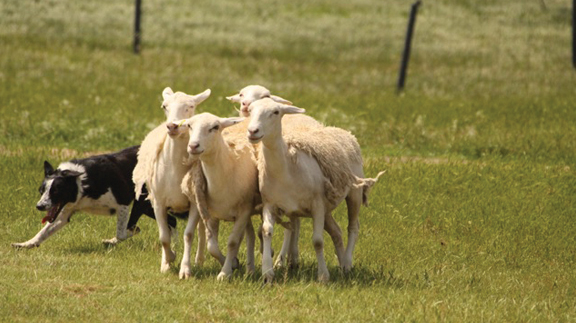
By Laci Jones
A dog is commonly referred to as “man’s best friend,” but is the saying still true for a working dog?
Randy Reed, an Oklahoma dog trainer for more than 10 years said having working dogs on the farm and ranch is helpful because of their ability to sort livestock. He said having a good working dog will make the trainer look good.
“These dogs will teach you just as much as you can teach them,” Reed said. “They are intelligent dogs, and all they want is to work and please you.”
Each dog has a different technique to herding livestock, Reed explained.
“Herding dogs were developed to do certain jobs for different types of livestock and for different types of farming,” said Susan Bennett, president of the Oklahoma Stock Dog Association.
Some dogs, known as headers, will herd livestock by putting pressure toward the stock’s head. Other dogs, known as heelers, will nip at the heels of stock to herd them. Bennett said some dogs can be headers and heelers. Each livestock species may require a different approach, Reed said.
“Working sheep is different than working cattle,” he said. “The dogs can work the sheep with their eyes. You don’t have to be on sheep so tight, but it’s a challenge with cattle.”
For an owner, it may be a challenge to decide which dog breed is appropriate to have. The best working dog breed depends on what livestock species is worked and the owner’s preferences.
Border Collie
Border collies are known for their herding ability, Bennett said. This breed of dog was bred for their intelligence and work ethic.
“The border collies that actually work livestock were never bred for how they looked,” she added.
Border collies typically use their eyes to herd livestock, but they can also be sent into a pasture and gather livestock.
“If you want to pull 300 yearlings off of a wheat pasture, you can pull up to the gate send the border collies out there,” Reed said. “They will bring the cattle right to you and through the gate.”
Bennett said people need to make sure they have jobs for working dogs.
“These dogs have been bred for hundreds of years, and they have to find an outlet for that instinct,” Bennett said.
When the border collies are not working, both Bennett and Reed keep their border collies in pens.
“I can run them loose, but they will overwork the stock,” Reed said. “They are like keeping an eye on kids.”
A downside to having a border collie is some may not have a tough enough bite, Reed said. They may not be as aggressive as other dog breeds.
Kelpie
Kelpies originated from Australia and are typically short, slick-haired dogs. This breed of dog is rangier than most other breeds, Reed said.
“Kelpies’ working style is similar to border collies,” he said.
Like border collies, kelpies are a “fetch” dog, meaning they will bring the livestock back to the owner, he said.
Bennett said the kelpies she has seen are typically more aggressive toward livestock. They have more stamina than most breeds, Reed added.
“When they go to work, they will be in a crouch position,” Reed said. “Their head is going to be down level with their shoulders. The tail is going to be dropped down behind them.”
Good border collies and kelpies have constant control, and they will have a lot of movement with their eyes, he said.
Reed said the American kelpie is close in proximity with the Australian kelpie. However, the American kelpie is weaker than the Australian kelpie.
Australian Cattle Dog
Developed from the native Australian dingo, the Australian cattle dogs was originally bred for driving livestock, Bennett said.
She said most working dogs within this breed are heelers, which is why they are commonly referred to as blue or red heelers, depending on their color.
Australian cattle dogs are typically used in pens and corrals to move livestock, Bennett said. They were not developed to go into open areas and gather livestock.
“We would haul cattle to the sale barn,” Reed said. “There was a blue heeler that would work on the chute and bite the cattle and get them through there.”
However, the Australian cattle dog is not as common in the competition trials as the border collie.
Reed said there is a market for the Australian cattle dog in the state. Australian cattle dogs are in high demand, but their herding ability is still to be determined.
Australian Shepherd
“Back when the United States was being settled, the Australian shepherd was the farm dog to have,” Bennett said.
Bennett said Australian shepherds were bred to be farm dogs, but they have changed in recent years to become show dogs and pets.
“There are very few Australian shepherds that can now go out and do a job,” Bennett said.
The Australian shepherd is not as popular for herding as other breeds today, Reed added.
“They are pretty dogs, but I haven’t seen any stock-oriented,” Reed said.
Reed said Australian shepherds can be trained, but he found them to be easily distracted.
Catahoula
Catahoulas are typically used for hunting. However, these bay-type dogs can be used to work livestock.
Reed said catahoulas and border collies have different styles of working. Unlike the border collie, this breed of dog uses their bark to move livestock, Reed said. Catahoulas will also work the outer perimeter of livestock, he said.
“Catahoulas will hunt livestock because they can use their nose, where the border collie will do everything by the power of their eyes,” Reed said.
Reed said catahoulas would be the better working dog in a situation where the owner needed help finding livestock.
However, working livestock with a catahoula is a team effort. A catahoula dog will not fetch livestock, but they will keep livestock in a “tight wad.” The owner will have to move the cattle themselves.
Cattlemaster
The cattlemaster is a newer breed of working dog. They are a cross between Border collie, pit bull, and kelpie, and they were bred for working cattle, according to Reed. They are more aggressive and have a stronger bite.
However, when cattlemaster was bred to get more bite, they lost their natural herding ability. Reed experienced this firsthand when he trained a cattlemaster.
“There wasn’t the natural ability,” Reed said. “She was just mechanical. I can move her, but she couldn’t read a cow.”
Reed said other breeds of dogs can potentially be used as working dogs including corgis, McNab shepherds and German shepherds. However, before purchasing a new dog, the buyer should research bloodlines and breeders.
“Buy a dog that can be bred to work cattle,” Reed advised. “Go watch the parents work and research who has trained the dogs.”
It is also important to purchase a dog that has been bred to work the specific species of livestock, Bennett added. No matter what dog breed an owner chooses, imported dogs may not always make the best working dogs.
“Just because a dog is imported doesn’t mean it will be better than a dog bred right here in the United States,” Bennett said.
She said there are many more great dogs and trainers in the United States than 20 years ago. It may be helpful to seek advice from a professional to help kick-start a new program, she added.
After purchasing a working dog, it is important to spend extra money to send the dog to a trainer for 30 to 60 days, Reed said. Then, the owner should spend quality time with the dog and the trainer to learn how to work together.
Bennett said each dog may require a different type of training, which may require adjusting. She said incorporating techniques from several different trainers can help the owner and their best friend.
This article was originally published in the January 2016 edition of Oklahoma Farm & Ranch.
-

 Attractions8 years ago
Attractions8 years ago48 Hours in Atoka Remembered
-

 Country Lifestyle8 months ago
Country Lifestyle8 months agoJuly 2017 Profile: J.W. Hart
-

 Country Lifestyle9 years ago
Country Lifestyle9 years agoThe House a Treasure Built
-

 Country Lifestyle3 years ago
Country Lifestyle3 years agoThe Two Sides of Colten Jesse
-

 Outdoors7 years ago
Outdoors7 years agoGrazing Oklahoma: Honey Locust
-

 Equine8 years ago
Equine8 years agoUmbilical Hernia
-

 Outdoors5 years ago
Outdoors5 years agoPecan Production Information: Online Resources for Growers
-

 Farm & Ranch7 years ago
Farm & Ranch7 years agoHackberry (Celtis spp.)

